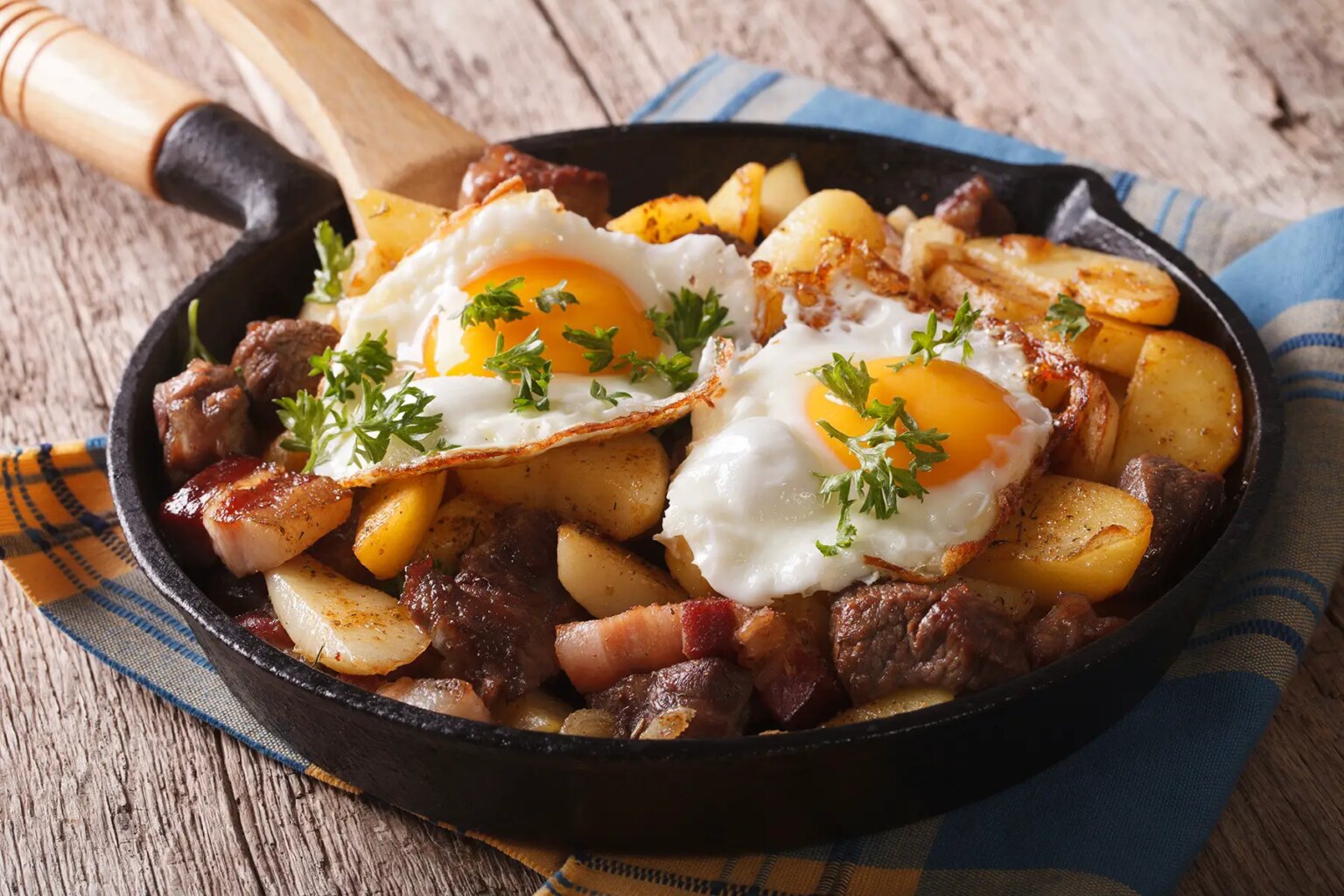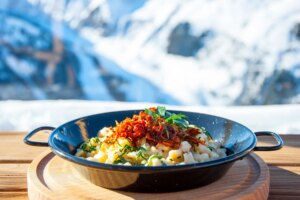With neighboring countries like Germany, Italy, and Switzerland strongly influencing Austrian cuisine, the country boasts a diverse melting pot of dishes. And because many of these are easy to make, you won’t find it too difficult to whip them up in your kitchen. So why not explore Austrian culture with your tastebuds and follow these simple recipes to create wholesome Austrian food at home? Guten Appetit!
HelloFresh
Want to create some classic Austrian dishes in your own kitchen? HelloFresh is a leading meal-kit provider that delivers innovative recipes from Austria and around the world straight to your doorstep. Choose from a range of recipes and let HelloFresh transform mealtime for you and your family.
1. Wiener Schnitzel
Wiener Schnitzel, which translates to ‘Viennese cutlet’ in German, is one of Austria’s most important national dishes. In fact, it is so synonymous with the country that its name is protected by law; it can only be called Wiener Schnitzel when made with veal.
To create it, thin cutlets of meat are lightly coated in breadcrumbs and deep-fried in butter or lard until golden brown. These are then served with a wedge of lemon and a side of potato salad, cucumber salad, or French fries.
A beloved favorite among locals and expats alike, Wiener Schnitzel can be found everywhere from street food stalls to high-end restaurants across Austria.
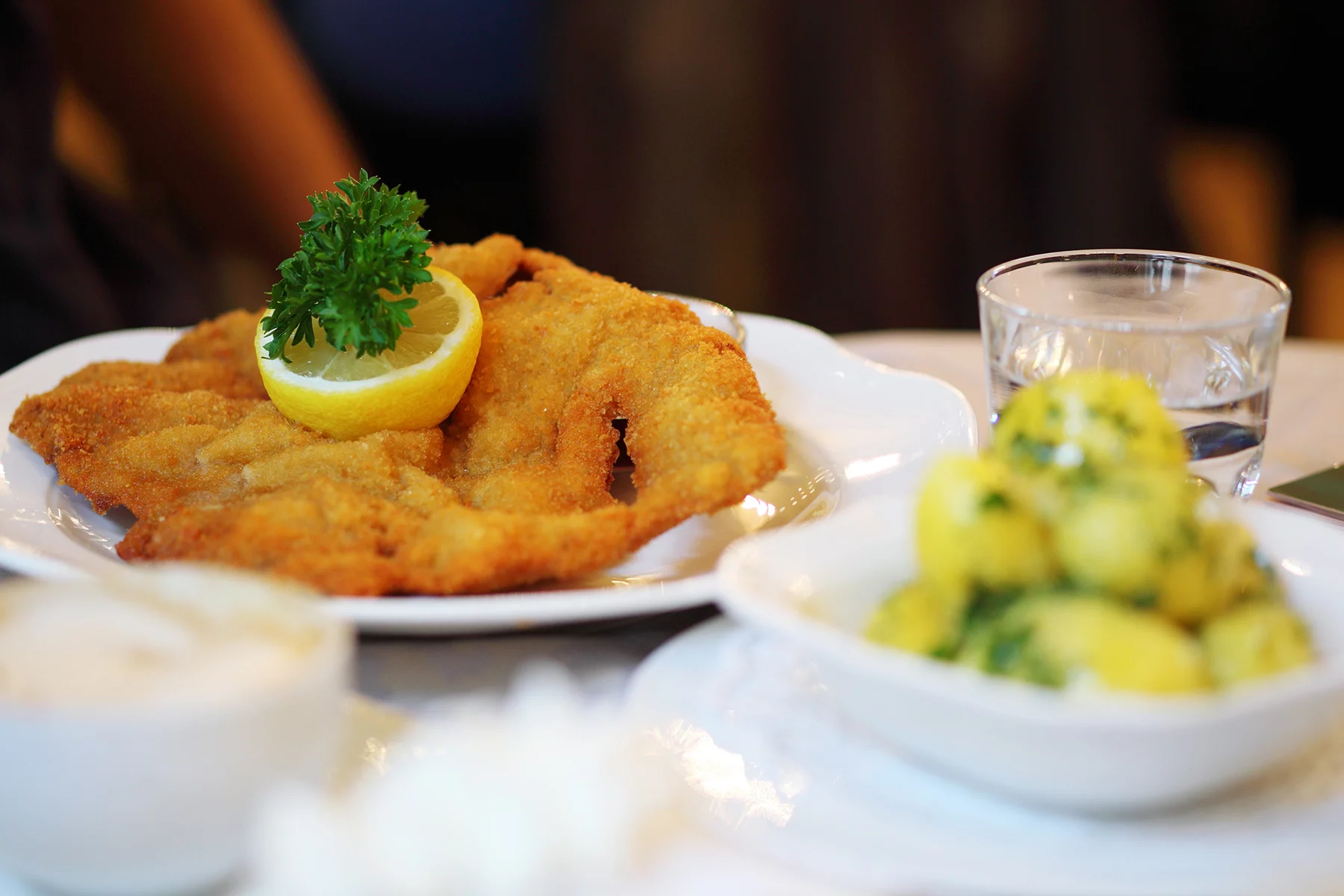
Make your own Wiener Schnitzel
- Try this easy-to-follow recipe with photos
- Give this 5-star recipe by Michelin-star chef Kurt Gutenbrunner a go
- Follow this quick video tutorial and learn how to make it
2. Wiener Würstchen
Wiener Würstchen is traditionally made from a mixture of pork and beef encased in sheep’s intestine. Simple to make, yet bursting with flavor, the iconic Viennese sausage is an essential part of Austrian cuisine.
People often enjoy them as a main dish served with fermented cabbage or Sauerkraut, radishes, and potato salad. They are also a popular snack, served in a hot bun seasoned with mustard, ketchup, and other sauces. In fact, Wiener Würstchen is one of the most common street foods in Austria, and you can buy them from vendors all across the country. Paired perfectly with a cold beer, these should definitely be on your Austrian food bucket list!
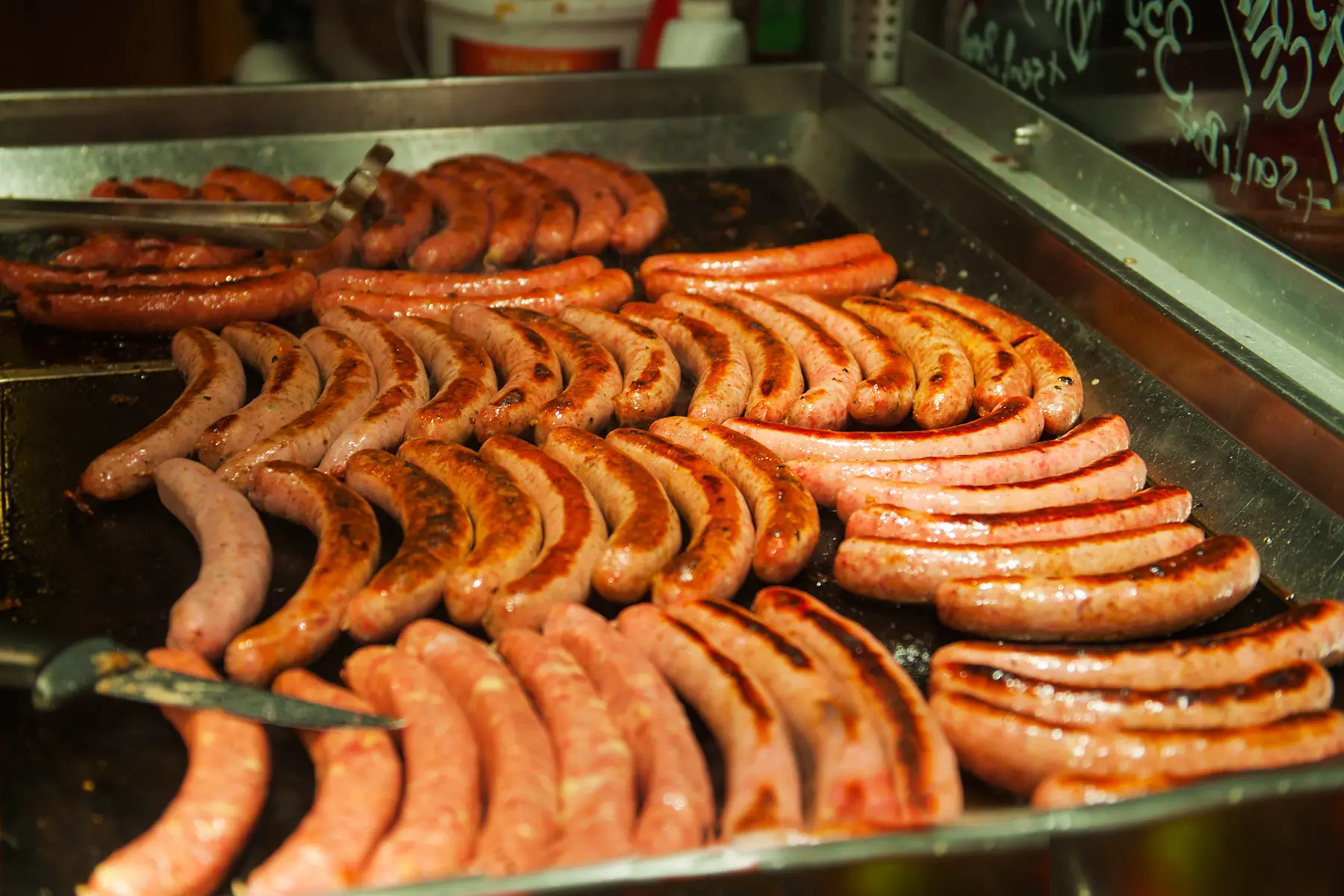
Make your own Wiener Wüstchen
- Follow this juicy recipe to make Würstel mit Saft (goulash juice)
- Test your German skills with this video tutorial (with English subtitles)
- Discover the history behind the famous Wiener Würstchen
3. Käsespätzle
Comfort food doesn’t get much better than Käsespätzle, Austria’s answer to macaroni and cheese. Perfect for chilly winter days, this hearty dish consists of chewy egg noodles (Spätzle) in a creamy Emmentaler cheese sauce topped with butter caramelized onions.
Käsespätzle is actually a specialty dish of the Swabian region in Germany. However, many variations exist throughout neighboring countries. In Austria, people serve it as either a side or a main dish and often enjoy it in the country’s alpine huts. Great for sharing, this easy-to-make dish remains one of the most popular Austrian foods among locals and expats alike.
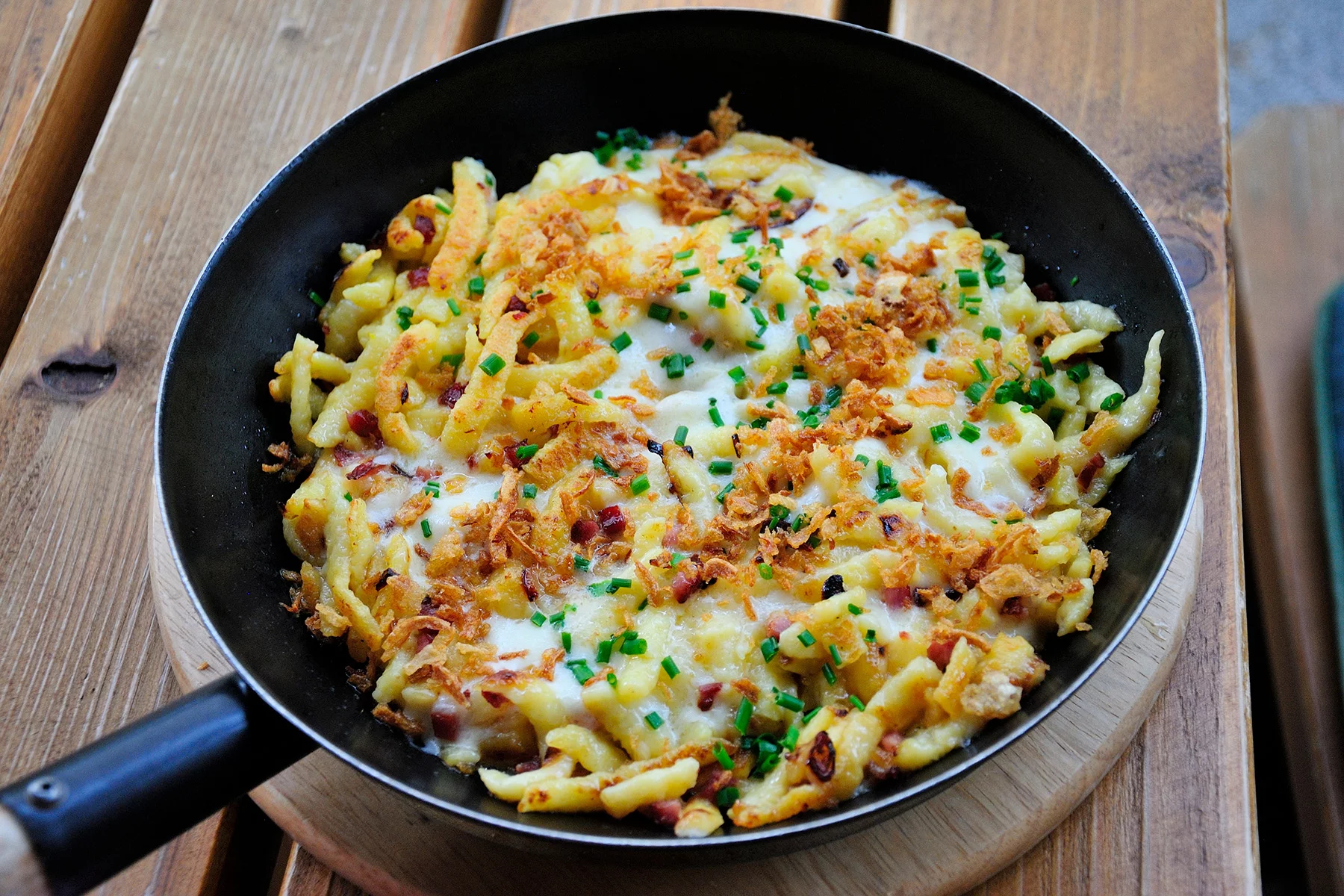
Make your own Käsespätzle
- Print this handy recipe to keep in your kitchen
- Learn how to make it from scratch with this recipe and photos
- This mouthwatering video (with English subtitles) should inspire you
4. Tafelspitz
Another classic Viennese dish is Tafelspitz, which is made by boiling veal in a spicy broth with root vegetables. People in Austria usually serve it with potatoes, carrots, and a creamy apple-horseradish and chive sauce.
Tafelspitz has remained a popular dish in Austria and the German state of Bavaria since the 19th century. Back then, it was common to boil meat and use the leftovers to make soup. Amazingly, the recipe and method of cooking have remained unchanged since then.
The key ingredients are tri-tip, sirloin, or rump cuts of beef. However, some cooks add pieces of chicken and beef marrow bones to the mix to create extra flavor and a clear broth.
Austrians traditionally eat Tafelspitz in separate courses, starting with the broth as an appetizer, followed by the beef and vegetables as the main.
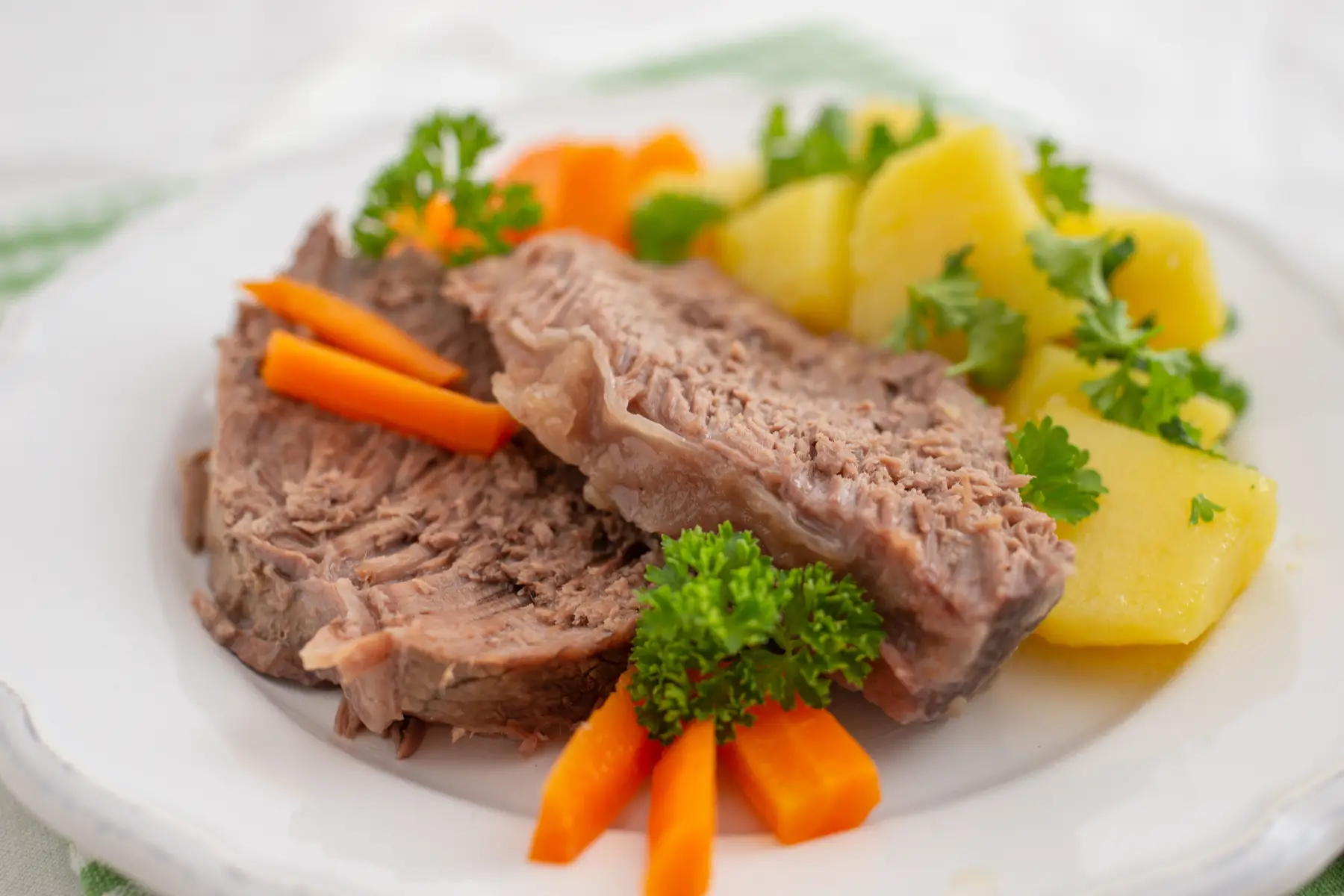
Make your own Tafelspitz
- Try this classic recipe, which serves six to eight people
- This step-by-step recipe with photos and video is great for beginners
- Follow this video tutorial to make Tafelspitz for four people
5. Tiroler Gröstl
Another popular Restessen (a dish made with leftovers from a Sunday roast) is Tiroler Gröstl. Originating from the skiing and hiking region of Tyrol, this hearty classic consists of pork, onions, and potatoes, and the finishing touch – a fried egg on top. It is historically popular among farmers, who enjoy sharing it straight from the skillet for lunch or breakfast.
To create a vegetarian version, you can simply replace the bacon with mushrooms, courgette, or sweetcorn. If you prefer a sweet flavor, however, you can use sweet potatoes instead of regular ones. And to spice things up, adding a little freshly chopped chili will definitely do the trick.
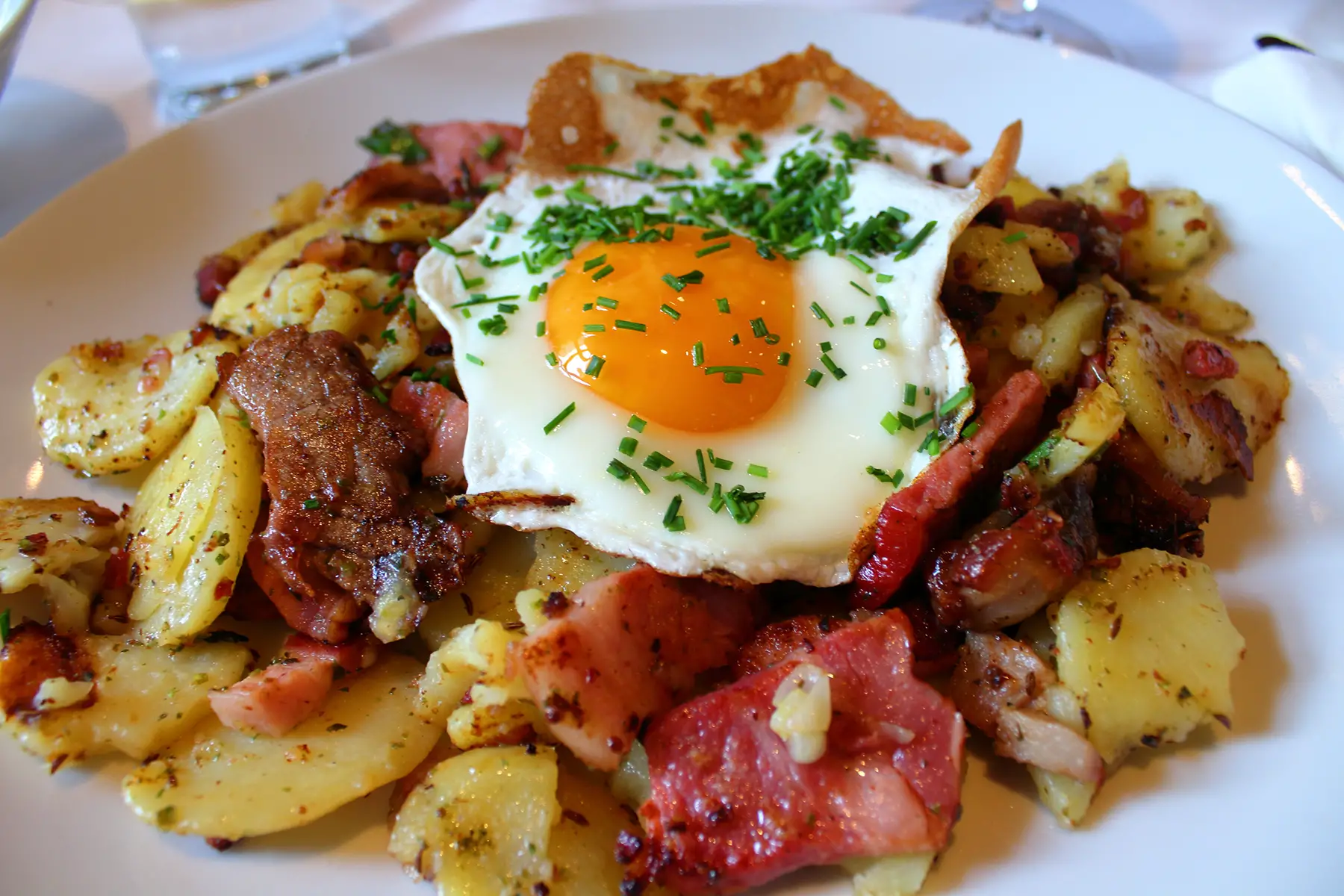
Make your own Tiroler Gröstl
- Print this simple recipe and give it a go
- This tasty recipe includes useful cooking tips
- Practice your German with this video tutorial (without subtitles!)
6. Erdäpfelgulasch
Simple to make, yet heavenly to taste, Erdäpfelgulasch (potato goulash) is ideal for those cutting back on their meat intake, given that its main ingredients are potatoes, onions, and gravy.
Although originally from Hungary, this heart-warming stew is one of the most famous dishes in Austria, and several food variations can be found in surrounding countries. For instance, some nations make it with beef and cook it for several hours to create a thick, dark gravy. And while potato is the key ingredient in Austria, some people like to add smoked sausage to give it more flavor.
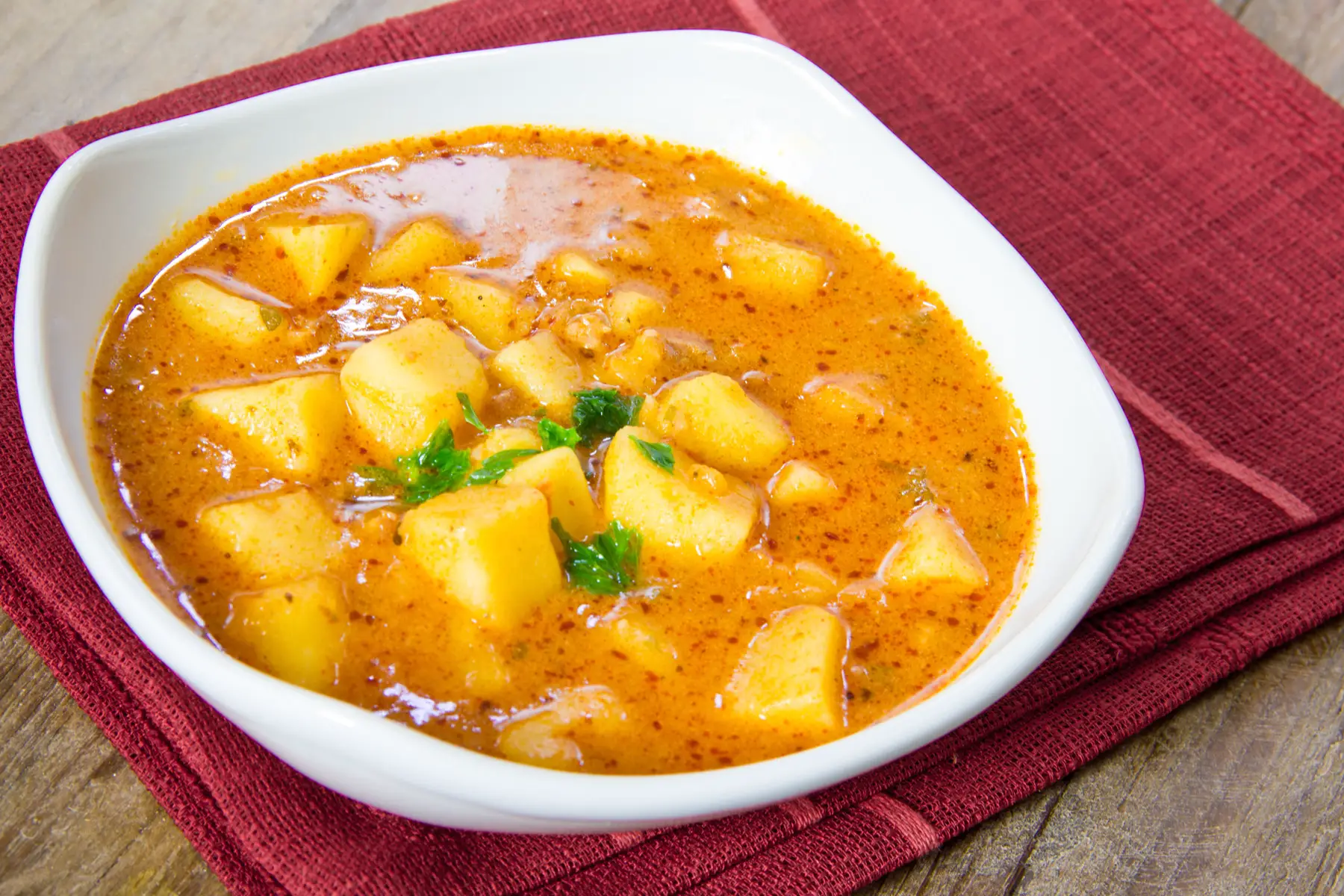
Make your own Erdäpfelgulasch
- Print this deliciously creamy recipe and give it a go
- Follow this recipe with photos and helpful tips
- This fun video might inspire you to hit the kitchen
7. Martinigansl
Although Martinigansl is only available in restaurants for a few weeks in October and November, it is still considered to be a very special Austrian food. It consists of roast goose stuffed with chestnuts and dried plums, served with red cabbage and potato dumplings.
This succulent dish is a very old Austrian dish, and a way of remembering Saint Martin, the Bishop of Tours. As the legend goes, he was meant to become a bishop but did not want to take on such responsibilities. He attempted to escape from his duties by hiding in a stable filled with geese. Once there, the geese betrayed him by making a loud noise, thus revealing his hiding place. Forced to become the bishop, St. Martin sought revenge by ordering all the geese in the stable to be cooked and eaten that same night!
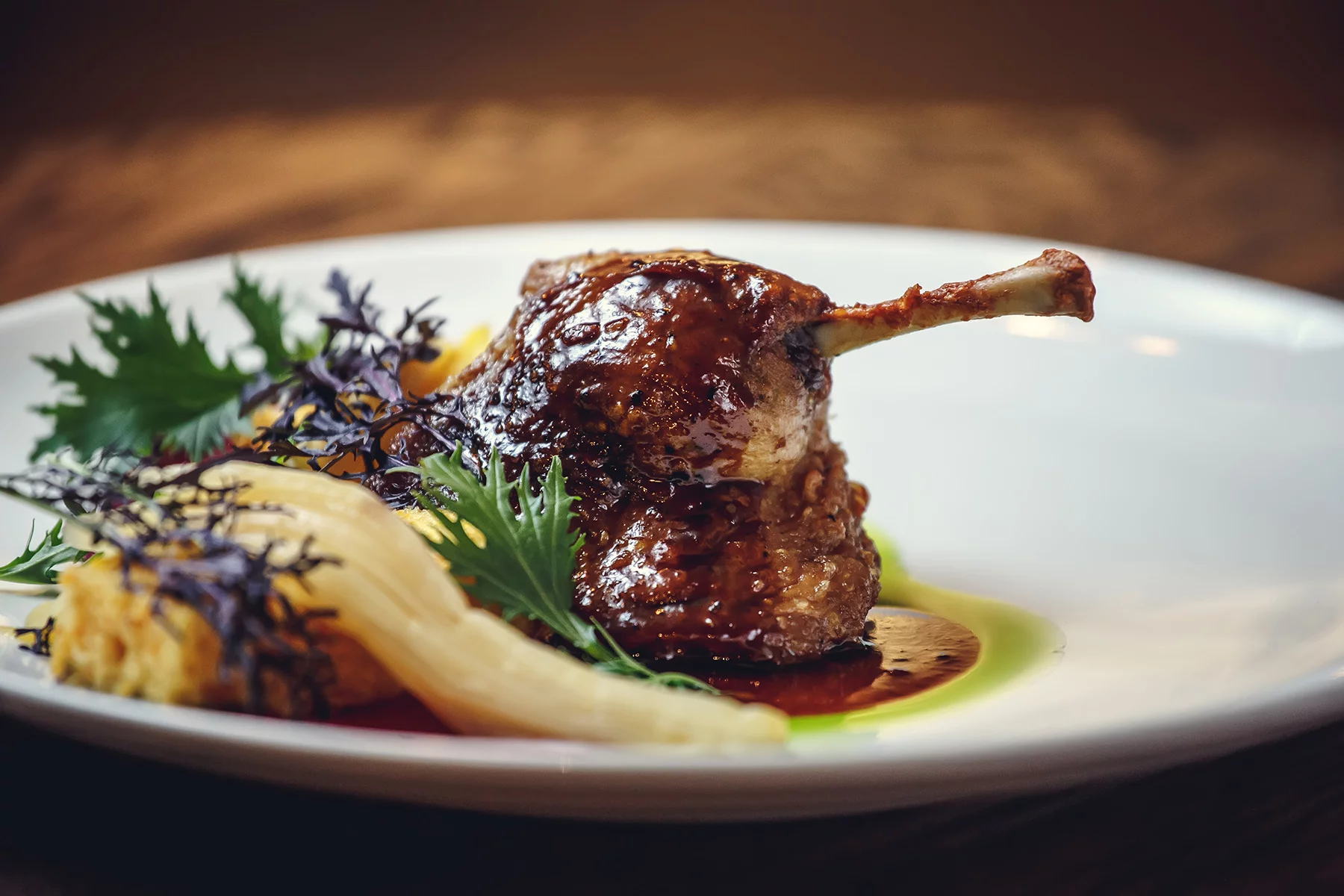
Make your own Martinigansl
- Follow this simple recipe with fun facts and helpful tips
- Watch this fun video on how to prepare traditional Martinigansl
- This detailed recipe with video is great for beginners
8. Fleischlaberln
While Fleischleber might look basic, these delicious mixed meat patties are a culinary specialty in Austria. They usually consist of pork and beef, and are seasoned with salt, pepper, garlic, onions, and parsley. Small cubes of bread are also soaked in milk and added to the mixture to bind it together and add volume. Depending on your tolerance level, you can also add spices to the mix to give the patties a kick.
People traditionally serve Fleischlaberln with creamy mashed potato (Kartoffelpüree), making them a popular Austrian comfort food on cold days.
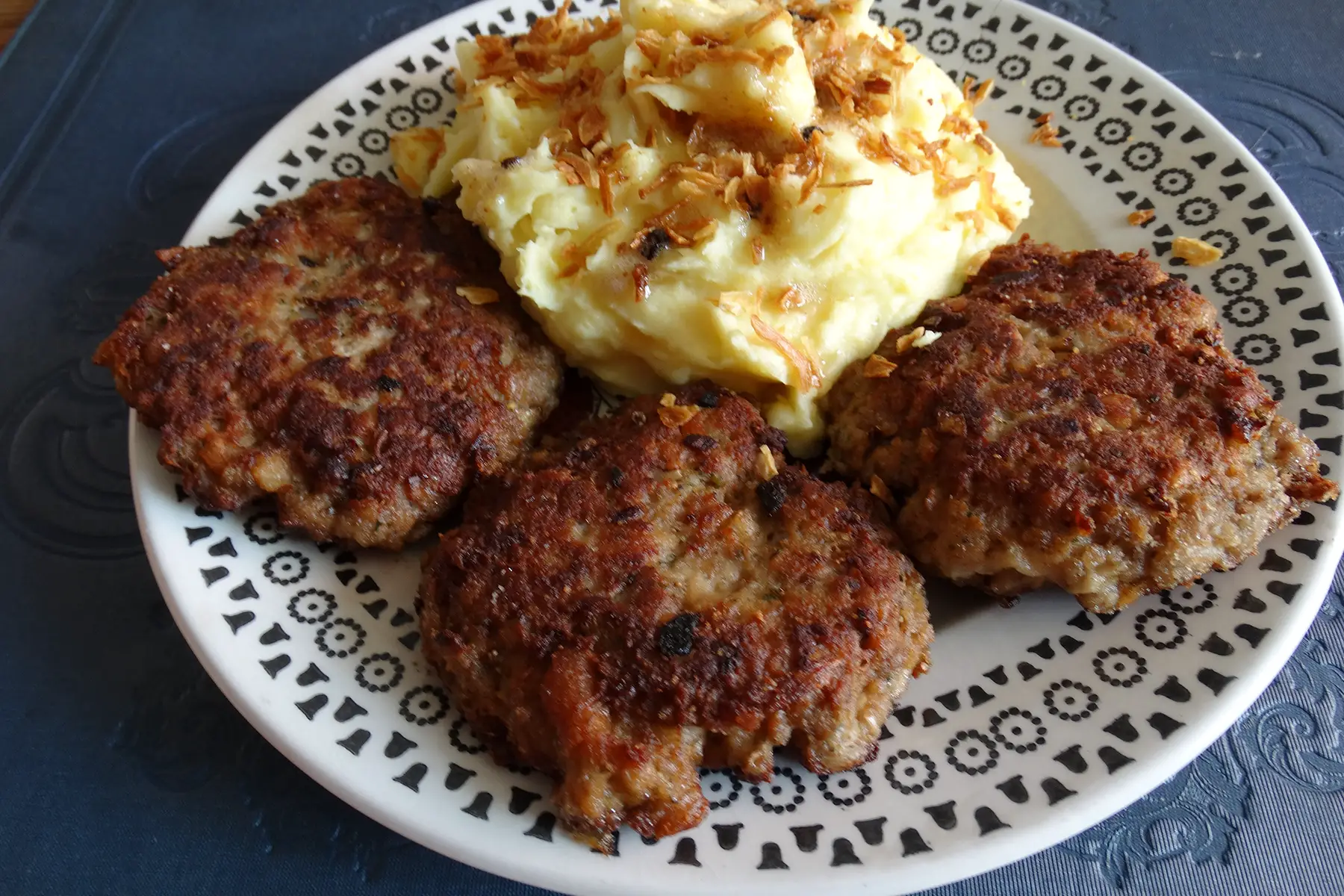
Make your own Fleischlaberln
- Print this basic recipe and give it a go
- Try this classic recipe just like your Austrian grandma used to make it!
- Step up the challenge and follow this recipe in German
9. Viennese Apfelstrudel
Our list of top Austrian foods wouldn’t be complete without mentioning Viennese Apfelstrudel. This beloved apple dessert consists of apples, raisins, sugar, and cinnamon, encased in a thin sheet of unleavened dough.
Despite its delicate appearance, it is surprisingly easy to make. That said, it takes time and patience to get the paper-thin dough just right and the raisins adequately soaked in rum. In fact, the hardest part is getting the dough thin enough to almost see through it without tearing it.
Although Viennese Apfelstrudel is a heavenly dessert in its own right, it is best enjoyed with whipped cream, vanilla sauce, or a scoop of vanilla ice cream.
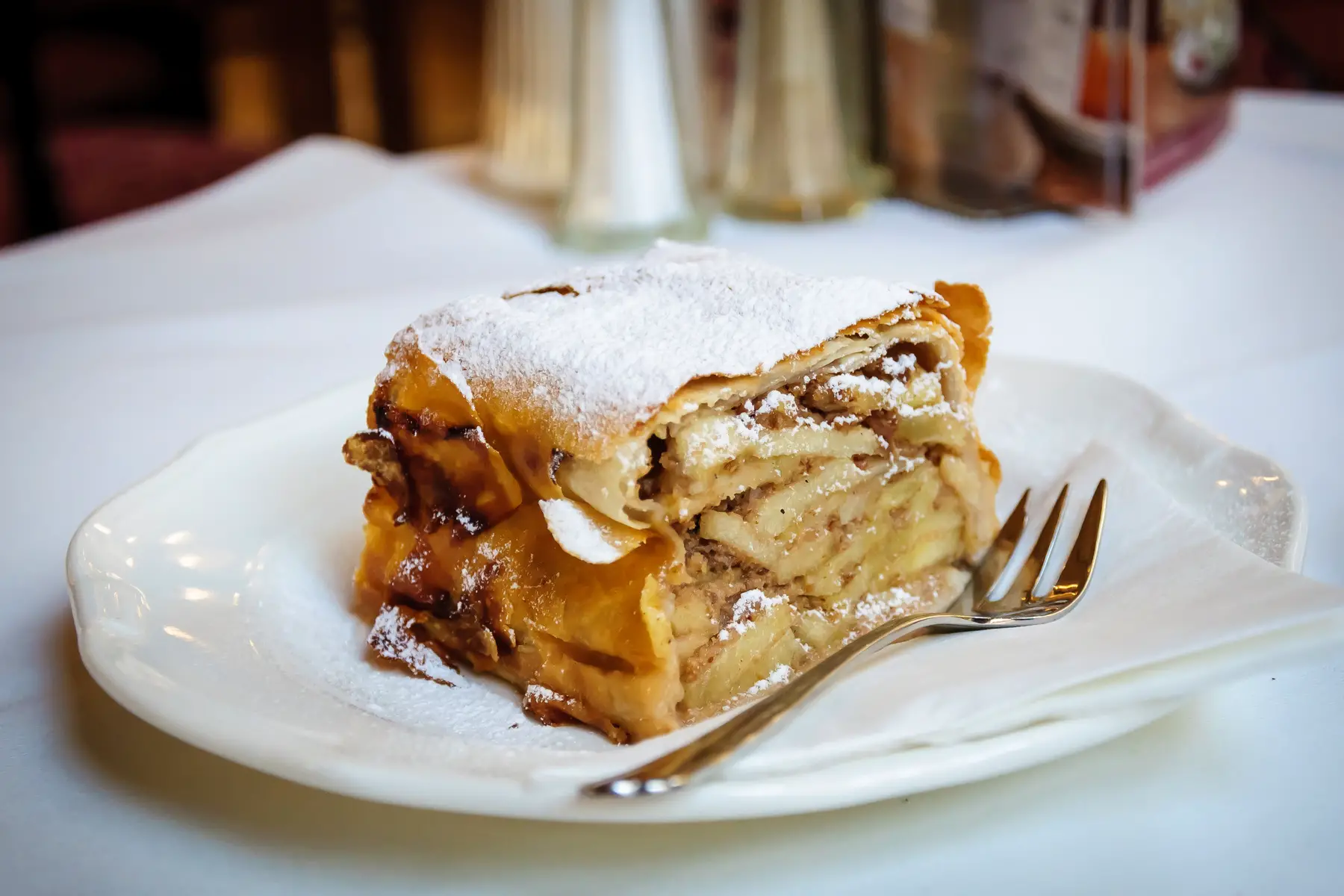
Make your own Viennese Apfelstrudel
- Follow this cheeky recipe, which includes fun facts and a video
- This detailed recipe with baking notes is great for beginners
- Print this classic recipe to keep in your kitchen
10. Sachertorte
Last, but certainly not least, on our list of top Austrian foods is the iconic Sachertorte.
This rich, dense chocolate cake was supposedly invented in Vienna in 1832 at the request of Prince Klemens Wenzel von Metternich. He tasked his kitchen staff to concoct an extraordinary dessert to impress his special guests. When the head chef fell ill, a 16-year-old apprentice chef named Franz Sacher stepped up to the challenge and created the scrumptious cake.
To this day, Sachertorte is considered to be one of the most famous cakes in the world – and for good reason. Crammed with chocolaty goodness, it consists of two thick layers of chocolate sponge cake, separated by a thin layer of apricot jam. To top it off, the cake is coated in dark chocolate icing. The delicious dessert is traditionally served with unsweetened whipped cream and often comes with a dark chocolate medallion on top.
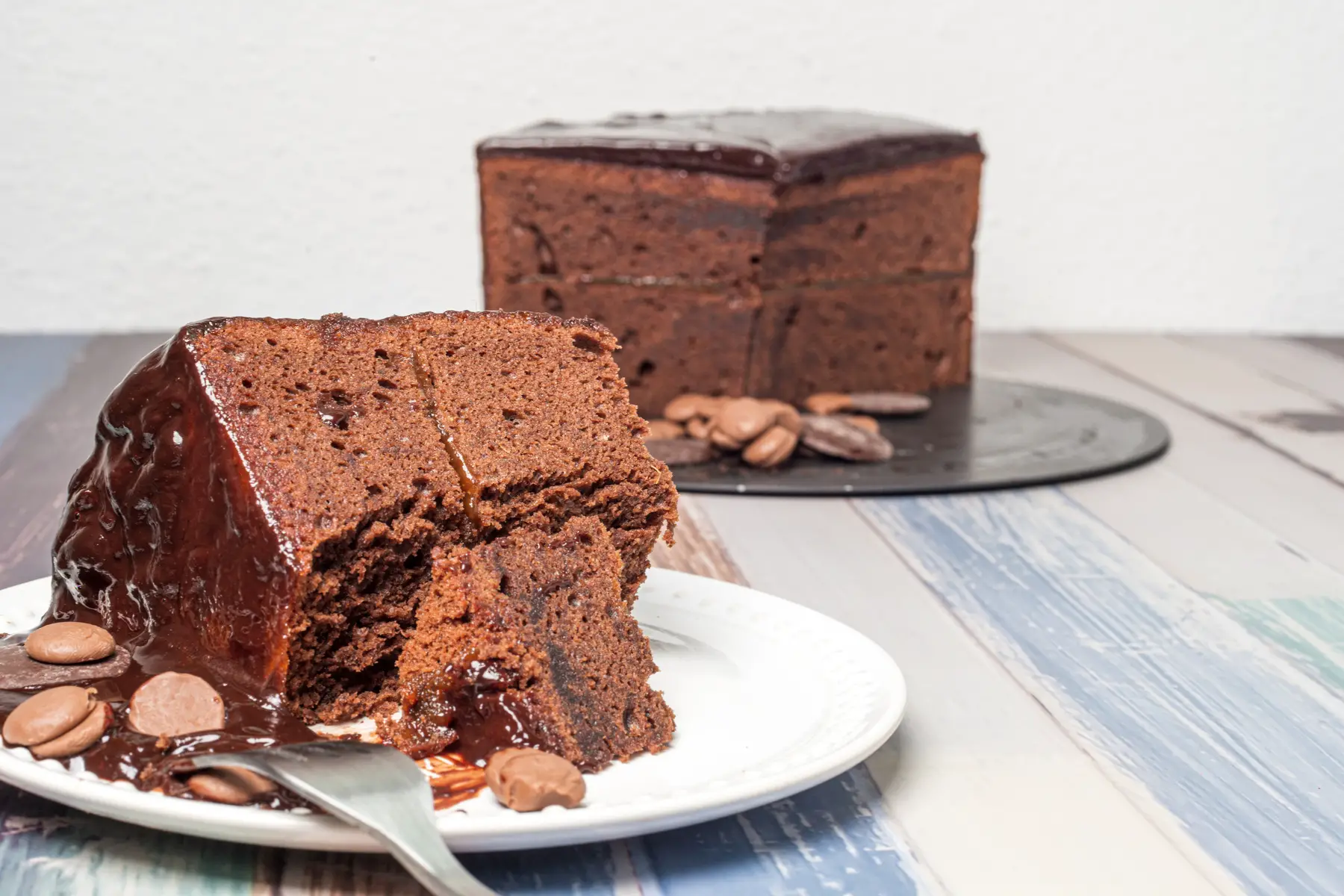
Make your own Sachertorte
- Give this easy-to-follow BBC Food recipe a go
- This detailed recipe is great for beginners
- Watch this dreamy video and learn how to make Sachertorte
